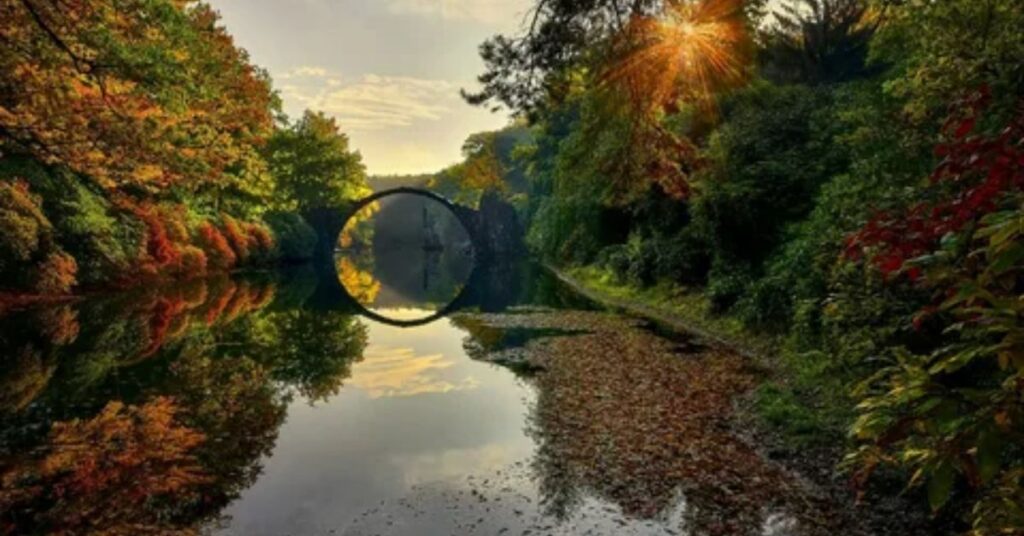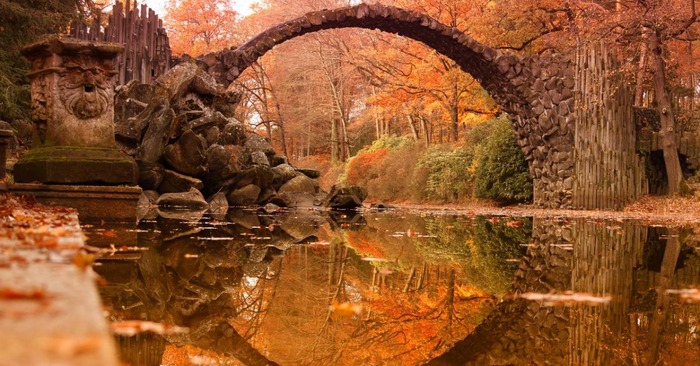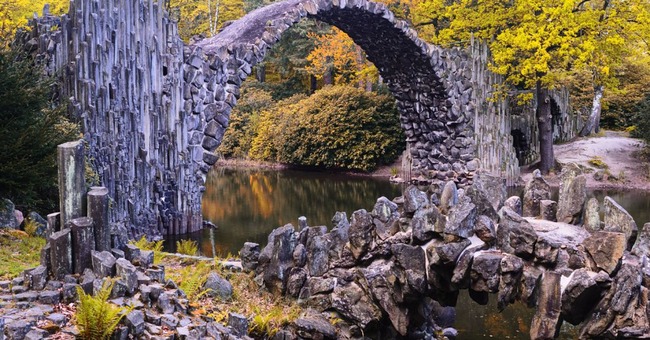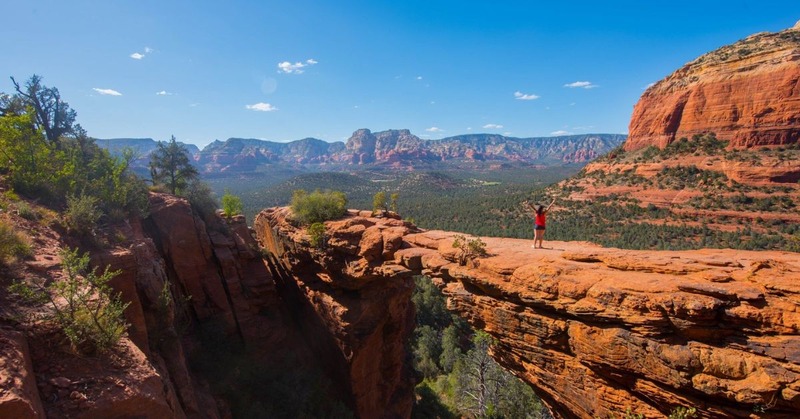Devil’s Bridge in Sedona is one of Arizona’s most iconic and breathtaking hiking destinations. Nestled within the Red Rock-Secret Mountain Wilderness, this natural sandstone arch offers stunning views of Sedona’s red rock landscape. Its unique formation and accessible trail attract countless visitors, making it a bucket-list hike for many outdoor enthusiasts. However, with its rising popularity, planning your trip wisely is essential to avoid the crowds.
For those seeking an unforgettable adventure, Devil’s Bridge offers a mix of light scrambling, scenic vistas, and a sense of accomplishment as you reach the arch. Knowing when and how to tackle this trail will make all the difference in your experience if you’re a seasoned hiker or a casual explorer.
Also, read this blog:https://bagispack.com/how-to-take-a-day-trip-to-oxford-the-perfect-one-day/
Introduction to Devil’s Bridge: A Natural Wonder in Sedona
Imagine standing on a thin strip of red rock, suspended high above a rugged canyon. This is Devil’s Bridge, Sedona’s largest natural sandstone arch. It’s a sight that takes your breath away, challenging your sense of scale and defying gravity.
Devil’s Bridge isn’t just a geological marvel; it’s a testament to the raw beauty of Arizona’s landscape. The hike to reach this iconic formation has become a bucket-list adventure for travelers worldwide, offering a perfect blend of challenge and reward.
Trail Stats: Mileage, Elevation Gain, and Difficulty of Devil’s Bridge
The Devil’s Bridge trail is a moderate 4-mile round-trip hike with an elevation gain of about 400 feet. The journey starts easy but gets steeper as you near the arch. Most hikers can complete the trail in 2-3 hours, depending on their pace and photo stops.
While not overly difficult, the final ascent involves some scrambling over rocks. Proper footwear and a decent fitness level are recommended. The trail is well-marked, making it suitable for beginners who are up for a challenge.
Why Devil’s Bridge is a Must-See Hike in Arizona

Devil’s Bridge offers a unique blend of natural beauty and adventure that’s hard to match. The arch itself is a stunning example of nature’s artistry, carved by wind and water over millions of years. Standing on the bridge gives you a rush of excitement and a sense of accomplishment.
The views from the top are equally impressive, showcasing Sedona’s famous red rocks and vast desert landscape. It’s not just about the destination; the journey through the scenic desert terrain makes this hike a full experience. For many, it becomes a highlight of their Arizona trip.
Also, read this blog:https://bagispack.com/the-best-place-to-visit-in-november-in-the-usa-2024/
How to Get to Devil’s Bridge: Directions and Trailhead Information
To reach Devil’s Bridge, head northwest from Sedona on Highway 89A. Turn right onto Dry Creek Road and follow it until it turns into FR 152. The main trailhead parking is at the end of this road. If you don’t have a high-clearance vehicle, there’s an earlier parking lot.
From the main lot, follow signs for Devil’s Bridge Trail. If you park earlier, you’ll start on Chuckwagon Trail before connecting to the main path. The trail is well-marked with signs and cairns. Remember to bring plenty of water and sun protection.
Exploring the Chuckwagon Trail: A Scenic Route to Devil’s Bridge

The Chuckwagon Trail offers a less crowded alternative start to the Devil’s Bridge hike. This 2.4-mile route winds through beautiful desert scenery, showcasing Sedona’s diverse plant life and rock formations. It’s a gentler ascent than the main trail, perfect for those wanting a longer, more gradual ascent.
As you walk, keep an eye out for wildlife and beautiful desert plants. The trail eventually connects with the main Devil’s Bridge path. While longer, many hikers prefer this route for its quieter atmosphere and extra time to soak in the surroundings.
The Final Stretch: Climbing to the Devil’s Bridge Arch
The last quarter-mile to Devil’s Bridge is where the real adventure begins. The trail steepens significantly, with natural rock steps leading you upward. You’ll need to use your hands at times, making it a fun scramble for most hikers. Take it slow and steady, especially if it’s hot.
As you climb, anticipation builds. Suddenly, you round a corner and there it is – the massive arch of Devil’s Bridge stretching before you. The final approach to the arch is wide enough for comfortable walking, but it can be nerve-wracking for those with a fear of heights.
When to Hike: Best Time of Year to Visit Devil’s Bridge

Spring and fall are ideal for hiking Devil’s Bridge. March to May and September to November offer comfortable temperatures and clear skies. The desert blooms in spring, adding splashes of color to the red rocks. Fall brings cooler air and golden light, perfect for photography.
Summer can be brutally hot, with temperatures often exceeding 100°F. If you hike in summer, start very early and bring lots of water. Winter can be chilly, with occasional ice on the trail, but it’s beautiful when dusted with snow. Always check weather forecasts before you go.
Managing the Crowds: Tips for Avoiding Busy Times
Devil’s Bridge has become increasingly popular, leading to crowded conditions, especially on weekends and holidays. To avoid the crowds, try hiking on weekdays or during the off-season. Early mornings and late afternoons are usually less busy and offer better lighting for photos.
If you must visit during peak times, be prepared to wait for your turn on the bridge. Bring extra water and snacks. Consider exploring nearby trails while waiting for the crowd to thin. Remember, patience and a positive attitude go a long way in enhancing your experience.
Capturing the Perfect Picture: Iconic Views from Devil’s Bridge

The classic Devil’s Bridge photo shows a person standing on the arch with the canyon behind them. To get this shot, you’ll need a friend or fellow hiker to take the picture from a specific vantage point on the cliff opposite the bridge. Don’t be shy about asking for help – most hikers are happy to assist.
For safety, stay back from the edge when not taking photos. The morning light is often best for photography, casting a warm glow on the red rocks. Wide-angle lenses can capture the full scale of the arch. Remember, no photo is worth risking your safety.
Under the Arch: A Hidden Viewpoint Most People Miss
While most visitors focus on the top of Devil’s Bridge, there’s a lesser-known viewpoint underneath. A short scramble down the rocks leads to the base of the arch, offering a unique perspective of its massive structure. From here, you can truly appreciate the bridge’s size and the forces that shaped it.
This spot is often quieter than the top, providing a moment of solitude. It’s also a great place for shade on hot days. Be careful when descending and ascending, as the rocks can be slippery. Not everyone feels comfortable making this climb, so assess your abilities before attempting.
Leave No Trace: Protecting the Beauty of Devil’s Bridge
The increasing popularity of Devil’s Bridge puts a strain on the fragile desert ecosystem. Every visitor practices the Leave No Trace principles. Pack out all trash, including biodegradable items like fruit peels. Stay on marked trails to prevent erosion and protect plant life.
Avoid carving or writing on rocks – it damages the landscape and ruins the experience for others. By being responsible visitors, we can ensure Devil’s Bridge remains beautiful for generations to come.
Safety Tips for Hiking Devil’s Bridge Trail
Safety should be your top priority when hiking Devil’s Bridge. Wear sturdy shoes with good traction for the rocky terrain. Bring more water than you think you’ll need – at least 2 liters per person. Apply sunscreen and wear a hat, as there’s little shade on the trail.
Start early to avoid the midday heat, especially in summer. Watch your footing on the final ascent and near the arch. While the bridge is wider than it looks, use caution when crossing. If you’re uncomfortable with heights, it’s okay to enjoy the view without walking on the arch.
Is Devil’s Bridge Worth the Hype? Final Thoughts and Recommendations
Devil’s Bridge lives up to its reputation as one of Sedona’s must-see attractions. The combination of a moderately challenging hike, stunning views, and the thrill of standing on the arch creates an unforgettable experience. It’s well worth the effort for most visitors.
However, to fully enjoy it, plan your visit wisely. Go early, be prepared for the hike, and have realistic expectations about crowds. Take time to appreciate not just the bridge, but the entire journey. Whether you’re an avid hiker or casual tourist, Devil’s Bridge offers a taste of Arizona’s natural wonders that you won’t soon forget.
FAQ’S
How long does it take to hike Devil’s Bridge in Sedona?
The hike takes about 3 to 4 hours roundtrip, depending on the route and pace, allowing time for photos and brief breaks, especially near the bridge’s scenic viewpoint.
Is Devil’s Bridge hike hard?
Devil’s Bridge is moderately easy, with a gradual incline. The last section requires light scrambling over natural rock steps, making it slightly challenging but manageable for most hikers.
Why is Devil’s Bridge called Devil’s Bridge Sedona?
The name comes from the arch’s daring and dramatic appearance, often linked to “devil’s bridges” in folklore, symbolizing a precarious, mysterious crossing over rugged landscapes.
CONCLUSION
Devil’s Bridge in Sedona offers an unforgettable hiking experience, blending natural beauty with a sense of adventure. While the trail can be crowded at peak times, its breathtaking views and the unique sandstone arch make it worth the effort.
To make the most of your trip, plan to visit during quieter times, such as early mornings or off-season months. Whether you’re a seasoned hiker or a casual explorer, Devil’s Bridge provides an iconic, rewarding journey through Sedona’s stunning red rock landscape that is not to be missed.

BagisPack.com: Your ultimate travel companion. Explore expert travel tips, packing guides, and destination insights. Empowering adventurers with essential advice for seamless journeys around the globe.








